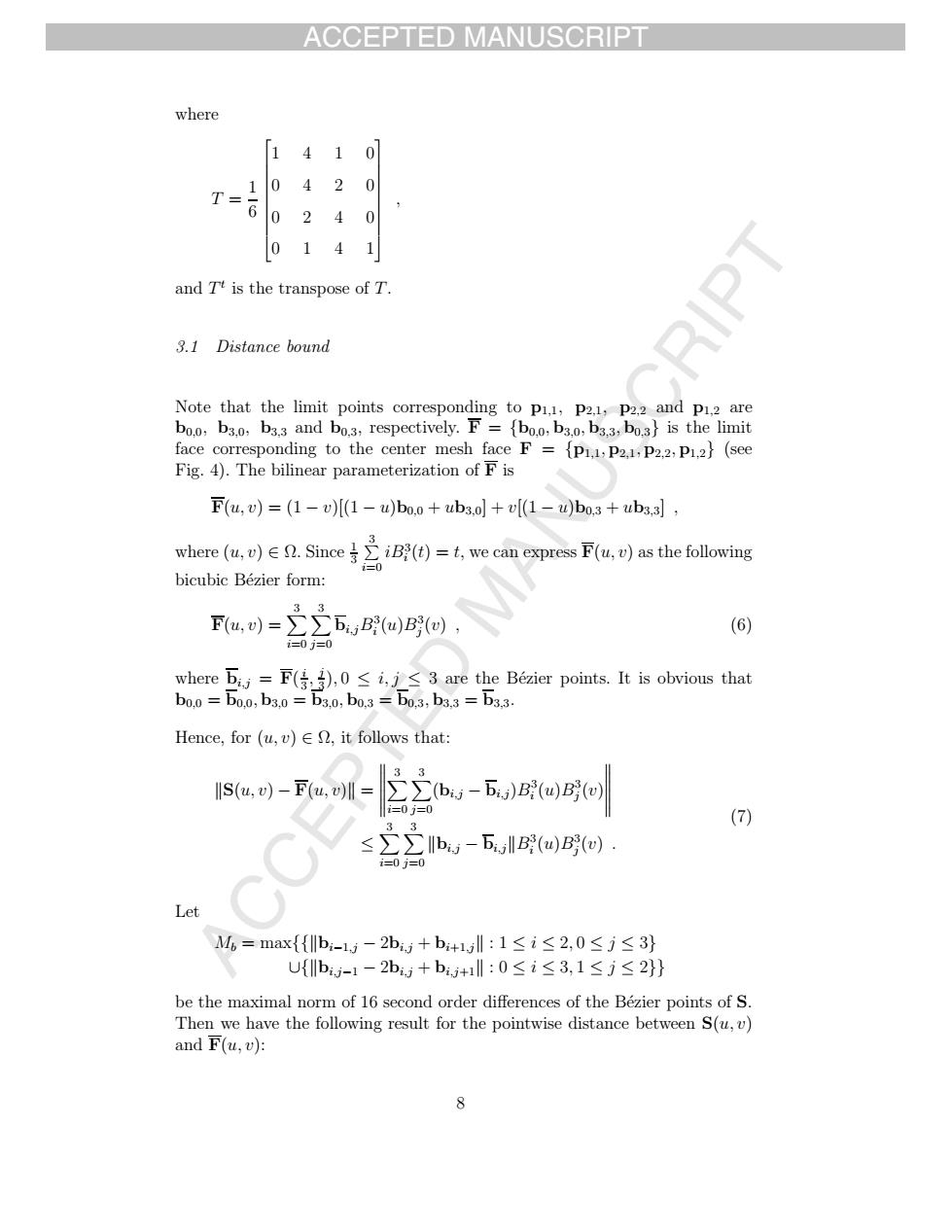正在加载图片...

ACCEPTED MANUSCRIPT 1 T- andithe traspee ofT. 兰生 P2P22p} F(u.v)=(1-c)((1-w)bun+uba.ol+o[(1-u)boa+ubss F,=上上b,, eEE0二长ptha 1s可-pFal-上主u-i间l ≤,-cu)侧 Let ACCEPTED MANUSCRIPT ACCEPTED MANUSCRIPT where T = 1 6 ⎡ ⎢ ⎢ ⎢ ⎢ ⎢ ⎢ ⎢ ⎢ ⎣ 1410 0420 0240 0141 ⎤ ⎥ ⎥ ⎥ ⎥ ⎥ ⎥ ⎥ ⎥ ⎦ , and Tt is the transpose of T. 3.1 Distance bound Note that the limit points corresponding to p1,1, p2,1, p2,2 and p1,2 are b0,0, b3,0, b3,3 and b0,3, respectively. F = {b0,0, b3,0, b3,3, b0,3} is the limit face corresponding to the center mesh face F = {p1,1, p2,1, p2,2, p1,2} (see Fig. 4). The bilinear parameterization of F is F(u, v) = (1 − v)[(1 − u)b0,0 + ub3,0] + v[(1 − u)b0,3 + ub3,3] , where (u, v) ∈ Ω. Since 1 3 3 i=0 iB3 i (t) = t, we can express F(u, v) as the following bicubic B´ezier form: F(u, v) = 3 i=0 3 j=0 bi,jB3 i (u)B3 j (v) , (6) where bi,j = F(i 3 , j 3 ), 0 ≤ i, j ≤ 3 are the B´ezier points. It is obvious that b0,0 = b0,0, b3,0 = b3,0, b0,3 = b0,3, b3,3 = b3,3. Hence, for (u, v) ∈ Ω, it follows that: S(u, v) − F(u, v) = 3 i=0 3 j=0 (bi,j − bi,j )B3 i (u)B3 j (v) ≤ 3 i=0 3 j=0 bi,j − bi,jB3 i (u)B3 j (v) . (7) Let Mb = max{{bi−1,j − 2bi,j + bi+1,j : 1 ≤ i ≤ 2, 0 ≤ j ≤ 3} ∪{bi,j−1 − 2bi,j + bi,j+1 : 0 ≤ i ≤ 3, 1 ≤ j ≤ 2}} be the maximal norm of 16 second order differences of the B´ezier points of S. Then we have the following result for the pointwise distance between S(u, v) and F(u, v): 8������